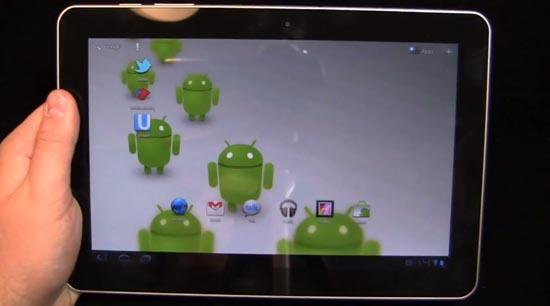
Getting a high-end device for a relatively cheap price tag is something that we’ve all gotten accustomed to. Sure, you have to sign a hefty two-year contract to get the biggest discount on the phone right off the bat, but many people are willing to do this to save costs right up front. Paying only $200 (or $300, as the new trend seems to be for some phones) is better than paying upwards of $600 to get the best, new shiny device on the market. Some of those new devices aren’t just phones, though, are they? Tablets are a newcomer to the mainstream scene, so why is it that we’re still left without worthwhile subsidized pricing?
As of right now, buying a tablet from a wireless carrier isn’t all that hard. After all, devices like Research In Motion’s BlackBerry PlayBook, Apple’s iPad 2, and Samsung’s Galaxy Tab (in varying sizes) are available directly from wireless carriers. Specifically, these devices feature the ability to connect to a carrier’s data network, providing easy access anywhere you go, without having to look for a WiFi hotspot. There’s obviously plenty of differences between a tablet and a phone, but if we really get right down to it, are there enough differences to warrant such a vast difference in pricing plans between a tablet and a phone?
As of right now, the 16GB iPad 2 from Apple costs $499, WiFi-only. If you want to include 3G-connectivity from either AT&T or Verizon, then you’ll need to throw down an additional $130, equaling $629 for the pleasure of Internet access away from a mobile hotspot. That’s without any subsidized pricing, mind you, as that doesn’t exist for the iPad 2, even if you sign up for a data connection. (No, this doesn’t involve a contract, but you do have to pay a monthly fee for that 3G access, which should count for something.) As for the iPhone 4, which is available for AT&T and Verizon, you’ll be paying only $199 to get your hands on the device if you sign a new, two-year contract. If you decide against the contract and want to just buy the phone out-right? $649. So that’s actually more expensive than the iPad 2, which is a tablet.
And then there’s the recently released Samsung Galaxy Tab 10.1. It’s the latest Galaxy Tab, and the added bonus for this device is that it is indeed 4G LTE-enabled. So, if you want to buy the Galaxy Tab 10.1 with a two-year contract, you’ll be dropping $529.99, which includes 16GB of storage. If you want the 32GB model, then you’ll be putting down $629.99. Full retail pricing for the 16GB model is $699, and $799 for the 32GB model. So, there’s some subsidized pricing here. But, if we look at the Samsung DROID Charge, the latest device from Samsung which is also 4G-connected, and then we’re looking at a $299.99 price tag with a two-year contract. Tossing the contract aside, we’ve got a full retail price of $569.99.
So if we’re taking these two examples, then we can see that a phone’s subsidized pricing with a two-year contract can cut the price of the device down to sometimes more than half. Now, let’s get one thing clear right here and now. If you’re buying a WiFi-only tablet out-right, then this isn’t part of the conversation. You don’t need to spend a monthly recurring fee for data for that device. But with data-connected tablets, whether it is 4G or 3G, then we should be seeing the same subsidized pricing as we do on phones. Sure, tablets may have bigger displays, but that’s just about where the differences end. While quad-core tablets are coming, so are phones. The differences aren’t that vast to make this pricing difference so distinct.
Phones are expensive. Tablets are expensive. In some cases, the phone is more expensive than the tablet. But, we’re still facing this issue where we have to spend (almost) full price on a tablet, just because it’s a tablet. Even if we‘re still paying a data fee every month, then we should be getting a larger discount right off the bat. What do you think? Have you skipped over tablets due to pricing? Would you be more willing to pick one up if the subsidized pricing was better? Let me know in the comments what you think.